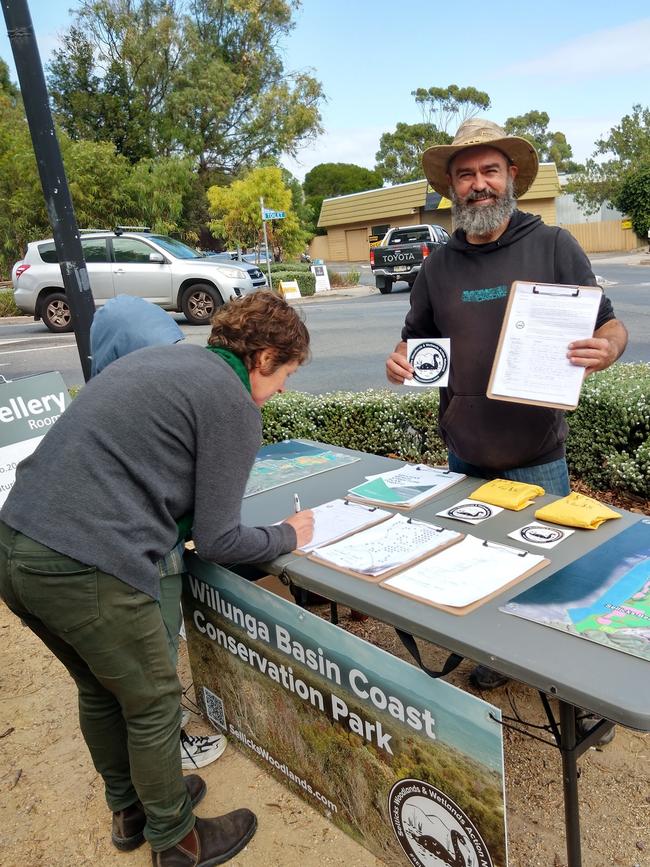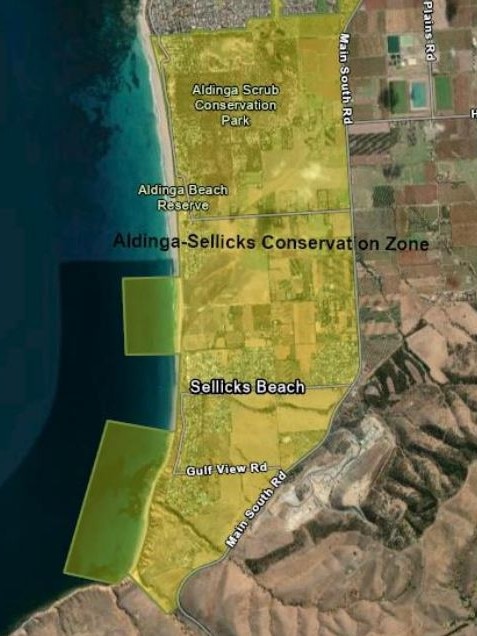Sellicks Woodlands and Wetlands Action Network’s bold plan to restore biodiversity
Land in Adelaide's south would be rezoned for restoration as part of a conservationist's bold plan. Have your say.
South
Don't miss out on the headlines from South . Followed categories will be added to My News.
A conservation group’s bold plan to restore biodiversity on Adelaide’s southern coastline would see big changes in the area.
The Sellicks Woodlands and Wetlands Action Network (SWWAN) submitted the ambitious plan as part of the state government’s Green Adelaide Regional Landscape Plan community consultation.
SWWAN co-ordinator Matt Farrell said the plan to reclaim and restore land between Aldinga and Sellicks Beach would aid declining biodiversity in the region.
“We need to restore massive amounts of landscape across the globe and basically do what David Attenborough is asking us to do which is restore as much land as we can,” Mr Farrell said.
“The current rates of decline in insects and birds are just terrible … the environment’s declining and if we continue as we are we’re in deep trouble.
“The big idea is to restore biodiversity and restore the native vegetation across as wide an area possible to act on biodiversity loss to protect our food and animals into the future and make us more resilient to climate change.”
The idea was born after draft plans for large-scale future development at Sellicks Beach and Aldinga were released late last year.
As part of the plan, parcels of land owned by the state government, private owners, businesses and investment companies would be rezoned for restoration.
Mr Farrell said land owners would have multiple options for how to transfer land ownership to the Department of Water and Environment (DEW) for restoration.


“I want land owners to be a part of this and see the benefits that they could actually accrue in whatever way that suits them,” he said.
“We’ve seen in the past what land acquisitions have done and the angst that’s caused and I definitely don’t want to go down that path.
“I want to work with people and help them understand the gravity of the situation we’re in, how they can help and how they can benefit.”
Options included in the SWWAN submission range from selling and moving on, selling but staying on the land and working with DEW, partnering with DEW but not selling or continuing to operate as usual.
“If somebody likes the idea of restoration but they don’t want to move on … they could either enter into a heritage agreement where instead farming wheat or olives or sheep they could convert their farm over to native vegetation and basically work as a conservation manager,” Mr Farrell said.
“They could take advantage of carbon credits, heritage agreements reduce rates to zero, they could get into the bush food market … and then there’s also a big market for native seeds for revegetation projects.
“People who have vineyards and things like that, if they wanted to stay we could build the park around them and they would gain economic benefits from that.”
The plan will now be considered as part of the state government’s Green Adelaide community consultation process.




